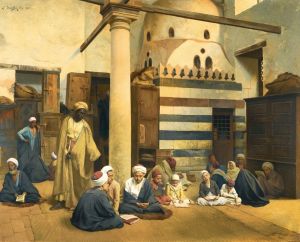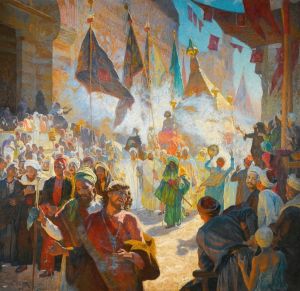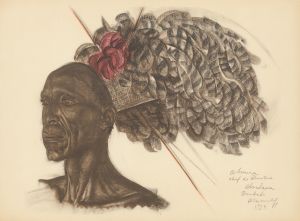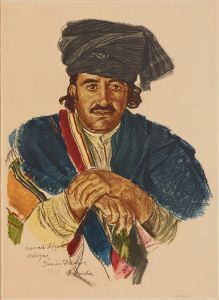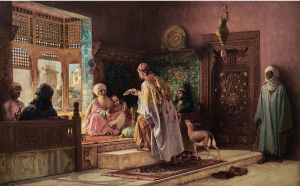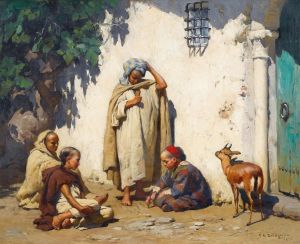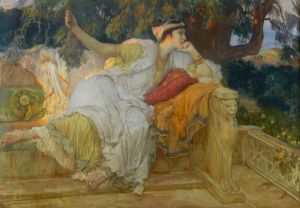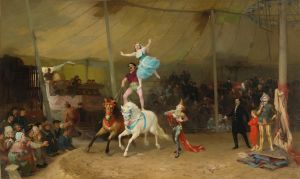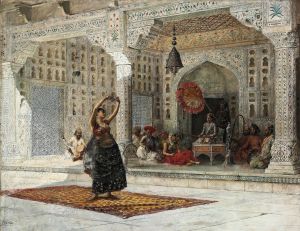
Femmes arabes devant une porte
A hand-painted replica of Frederick Arthur Bridgman’s masterpiece Femmes arabes devant une porte, meticulously crafted by professional artists to capture the true essence of the original. Each piece is created with museum-quality canvas and rare mineral pigments, carefully painted by experienced artists with delicate brushstrokes and rich, layered colors to perfectly recreate the texture of the original artwork. Unlike machine-printed reproductions, this hand-painted version brings the painting to life, infused with the artist’s emotions and skill in every stroke. Whether for personal collection or home decoration, it instantly elevates the artistic atmosphere of any space.
Frederick Arthur Bridgman (1847–1928) was an American artist known for his Orientalist paintings, which often depicted scenes inspired by his travels in North Africa and the Middle East. One of his works, Femmes arabes devant une porte (translated as Arab Women in Front of a Door), exemplifies his fascination with the cultures and daily life of the regions he visited.
The painting portrays a group of Arab women gathered in front of an ornate door, likely part of traditional architecture. Bridgman’s attention to detail is evident in the intricate patterns on the door and the women’s clothing, which reflect the artist’s interest in accurately capturing the textures, colors, and designs he observed during his travels. The composition focuses on the women as they engage in what appears to be a moment of rest or conversation, offering a glimpse into everyday life.
Bridgman was heavily influenced by his time in Algeria, where he spent several years studying and sketching local scenes. His works often sought to document the customs, attire, and architecture of the region, and Femmes arabes devant une porte is consistent with this approach. The painting is characteristic of the Orientalist movement, which was popular in the 19th century and sought to depict the "exotic" cultures of the East as imagined by Western artists. While Bridgman’s works were celebrated for their technical skill and vivid detail, it is important to note that Orientalist art has been critiqued for perpetuating stereotypes and romanticized views of non-Western societies.
The exact date of creation for Femmes arabes devant une porte is not widely documented, but it is believed to have been painted during Bridgman’s most active period in the late 19th century. The painting is part of a larger body of work that includes similar themes, such as depictions of marketplaces, domestic interiors, and other scenes of daily life in North Africa and the Middle East.
Bridgman’s works were well-received during his lifetime, and he exhibited regularly at the Paris Salon. Today, his paintings are held in various public and private collections, though specific details about the current location of Femmes arabes devant une porte are not readily available.
This painting remains an example of Bridgman’s skill in capturing the visual richness of the cultures he encountered, while also reflecting the broader context of Orientalist art in the 19th century.





